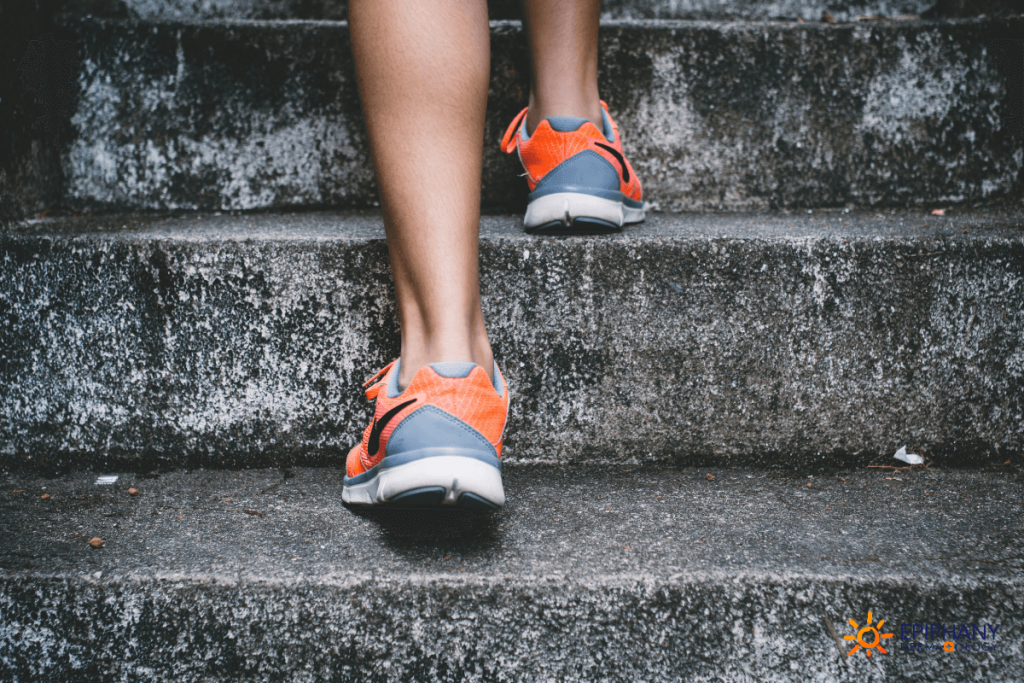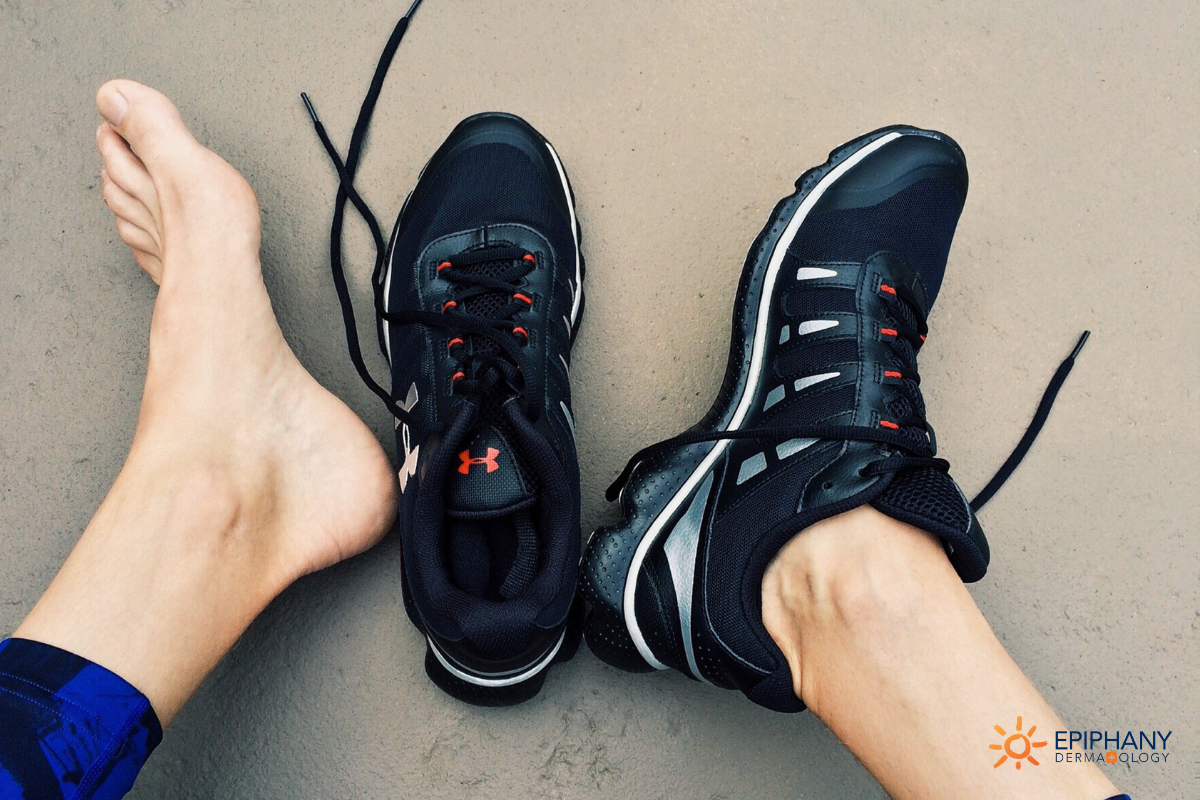We’ve all heard the term “athlete’s foot,” but do you actually know what it is?
Athlete’s foot is a fungal infection on the feet. Think of mold growing on your foot (that’s the basic concept!) and just as mold continues to spread unless you treat it correctly, athlete’s foot continues to grow on your skin.
As the fungus grows, it causes a scaly dermatitis that can itch, sting, and burn. If left untreated, this fungal skin infection can lead to a bacterial infection as well.
Not pleasant.
Fortunately, there are athlete’s foot treatments that really work. If you think you may have athlete’s foot, here’s how to identify it and how to find the best athlete’s foot treatment for you.
What Causes Athlete’s Foot?
You don’t have to be an athlete to get the fungus that causes athlete’s foot. We associate this condition with athletes because sweating and showering in communal areas are two prime ways to contract the fungus.
Sweating creates the perfect breeding ground for this fungi. The fungus latches onto wet, hot, enclosed feet. To add to the dilemma, people often contract this fungus in shower areas outside their home — like the gym or a hotel. These places are usually hot and humid — and not as sanitary as your home — making it a great place for the fungus to grow. Anywhere mold can grow, the fungus can grow too.
To make matters worse, athlete’s foot is highly contagious. So, if one person at the gym has it, they can easily spread it to anyone else that showers in that area. Likewise, if anyone in your family has it, they can spread it to you as well.
How Do I Know if I Have Athlete’s Foot?
Athlete’s foot is usually easy to identify. But how do you know if you’re dealing with this foot fungus and not another itchy skin condition? Look for a scale to form on the foot that starts to peel. Many people note a burning sensation between the toes or a sore between the toes that isn’t healing. The skin usually looks irritated and red.
Athlete’s foot usually affects both feet and can even spread to your toenails. Without an athlete’s foot treatment, the fungal infection continues to spread, affecting the nail with a condition known as onychomycosis. If you’ve ever noticed thick, yellow nails that start separating from the skin, that’s a result of the same fungus that causes athlete’s foot.
Sometimes people confuse athlete’s foot with plantar psoriasis — which is not a fungus. To a trained dermatologist, these conditions are clearly distinguishable.

Can Anyone Get Athlete’s Foot?
Anyone exposed to the fungus can get athlete’s foot. However, more adults seem to get athlete’s foot than teens or kids. Why? Because they already have toenail fungus. They’ve been exposed to it and haven’t treated it. Teenagers can get it, but adults are more frequently in contact with the fungus.
Related: The Most Common Fungal Infections, Explained
How Do I Treat Athlete’s Foot?
Don’t ignore toenail fungus or symptoms of athlete’s foot.
Treat it.
It won’t get better on its own — it’s an infection.
Remember, fungi like dark, moist areas. You want to create conditions opposite to that. For most patients, we recommend starting with an antifungal powder to dry out the moisture. Fungi hate to be dry and powder helps eliminate moisture. For patients with mild cases of athlete’s foot, I typically recommend using an over-the-counter antifungal powder in their socks once a day (usually at night).
If the powder alone isn’t strong enough to rid the infection, we can use prescription antifungal powders or creams on the area as well.
Depending on the severity of the infection, we can also prescribe an oral systemic antifungal medication. This is a powerful way to eliminate the infection, however, we’ll need to monitor lab work for kidney function if we opt for this type of medication.
With a combination of the powder, cream, and oral medication, we’re confident we can eliminate the fungus altogether. Finding the best athlete’s foot treatment for you will be a process of seeing what works and evaluating the severity of the infection.
Do I Need to Treat Athlete’s Foot, or Will It Go Away Naturally?
Athlete’s foot isn’t typically dangerous, but it will stay around forever unless it’s treated with an antifungal medication. It will not go away on its own or simply fall off.
We can treat this condition and get rid of the fungus. The treatment is easy. There’s no reason to continue living with itchy, red feet or yellow toenails. We have easy ways to stop the fungus from spreading.
How Can I Prevent Athlete’s Foot?
Worried about getting athlete’s foot? Keep your feet dry and clean. Wear moisture-wicking socks and avoid communal showers when possible.
If you see symptoms, begin an athlete’s foot treatment right away to stop the fungus from spreading. Rest assured, once you begin an athlete’s foot treatment, it’s an easy problem to treat.

Wesley Bull is a nationally certified physician assistant in Stephenville and Brownwood, TX with over 3 years of experience in family practice and a passion for medical dermatology. Wesley is devoted to providing comprehensive skincare to his patients, including general and surgical dermatology. A native Texan, he enjoys the outdoors and spending time with his wife Lesslie and their two children.


